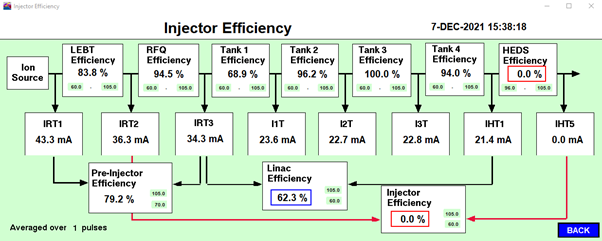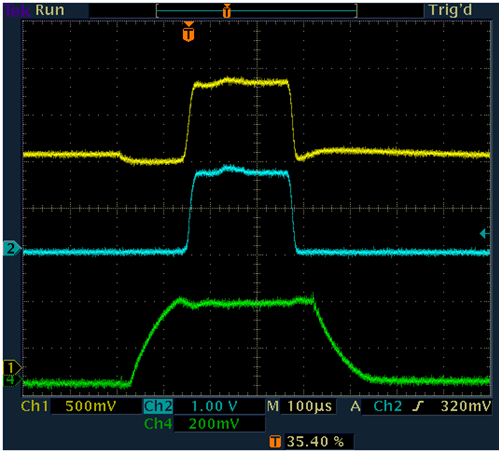The ISIS linear accelerator (linac) consists of an RFQ plus four radiofrequency (RF) accelerating tanks, accelerating hydrogen ions generated in the ion source to 37% of the speed of light before feeding them into the synchrotron for final acceleration. Tanks 1 and 4 were built at RAL in 1976 for ISIS' predecessor, Nimrod.
A project to replace tank 4 during the ISIS long shutdown in 2021 is nearing conclusion.
After the old tank was removed in July, the new tank was installed in six sections. Since then, the tank has been vacuum tested and aligned. Before being tested at high power, the team needed to ensure that the field profile along the tank is as required. To test this, they ran a 'bead pull' test, where a small hollow metal bead is pulled through the centre of the drift tubes that run along the centre of the tank whilst field measurements are taken.
Once all the offline testing was complete, several days of RF conditioning was carried out, gradually raising the power and pulse rate to operational level. The next stage was to turn on the beam!
“With the many RF, electrical, water and vacuum services connected and set to their respective operating levels we knew we'd done all the right preparation, but it was still a bit nerve-wracking!" explains Mark Keelan, ISIS RF Group Leader.
After a journey of almost 10 years, taking us from initial design work, through manufacture and testing and ultimately installation onto ISIS, the team were elated to see the tank successfully accelerate a beam. Not only did it accelerate – we were rewarded with a 94% transmission efficiency on the first attempt!

MCR Linac efficiency screen

The beam current monitors before and after tank IV (top two traces), showing the beam pulse passing through, alongside the radio frequency field (bottom trace).
Beginning in 2022, the programme will transition into commissioning phase, where machine physicists will carry out detailed setup and alignment on the entire linac in readiness for ISIS to resume operation.
It must be highlighted that this success is due to the world leading expertise, meticulous hard work and determination of many ISIS staff. A huge, well deserved 'thank you' needs to be shared with everyone involved and who played their part.
